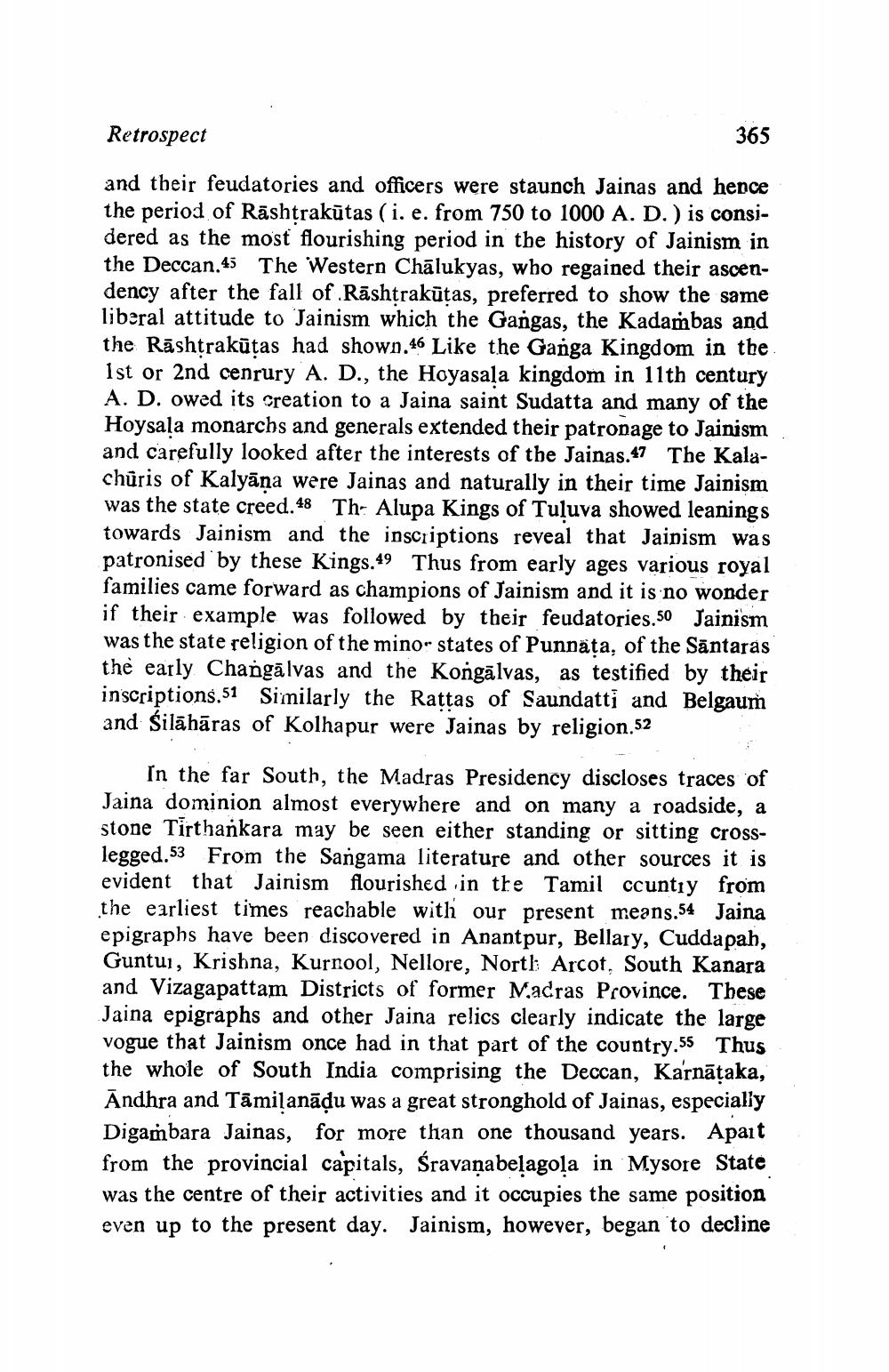________________
Retrospect
365
and their feudatories and officers were staunch Jainas and hence the period of Rāshtrakūtas ( i. e. from 750 to 1000 A. D.) is considered as the most flourishing period in the history of Jainism in the Deccan.45 The Western Chālukyas, who regained their ascendency after the fall of Rāshtrakūtas, preferred to show the same liberal attitude to Jainism which the Gangas, the Kadambas and the Rāshtrakūtas had shown.46 Like the Ganga Kingdom in the 1st or 2nd cenrury A. D., the Hoyasaļa kingdom in 11th century A. D. owed its Creation to a Jaina saint Sudatta and many of the Hoysala monarchs and generals extended their patronage to Jainism and carefully looked after the interests of the Jainas.47 The Kalachūris of Kalyāna were Jainas and naturally in their time Jainism was the state creed.48 Th: Alupa Kings of Tuluva showed leanings towards Jainism and the inscriptions reveal that Jainism was patronised by these Kings.49 Thus from early ages various royal families came forward as champions of Jainism and it is no wonder if their example was followed by their feudatories. 50 Jainism was the state religion of the minor states of Punnata, of the Sāntaras the early Changālvas and the Kongālvas, as testified by their inscriptions.51 Similarly the Rattas of Saundatti and Belgaum and Śilāhāras of Kolhapur were Jainas by religion.52
In the far South, the Madras Presidency discloses traces of Jaina dominion almost everywhere and on many a roadside, a stone Tirthankara may be seen either standing or sitting crosslegged. 53 From the Sangama literature and other sources it is evident that Jainism flourished in the Tamil countıy from the earliest times reachable with our present means.54 Jaina epigraphs have been discovered in Anantpur, Bellary, Cuddapah, Guntui, Krishna, Kurnool, Nellore, North Arcot, South Kanara and Vizagapattam Districts of former Madras Province. These Jaina epigraphs and other Jaina relics clearly indicate the large vogue that Jainism once had in that part of the country.55 Thus the whole of South India comprising the Deccan, Karnāțaka, Andhra and Tāmilanādu was a great stronghold of Jainas, especially Digambara Jainas, for more than one thousand years. Apait from the provincial capitals, Śravanabelagoļa in Mysore State was the centre of their activities and it occupies the same position even up to the present day. Jainism, however, began to decline




